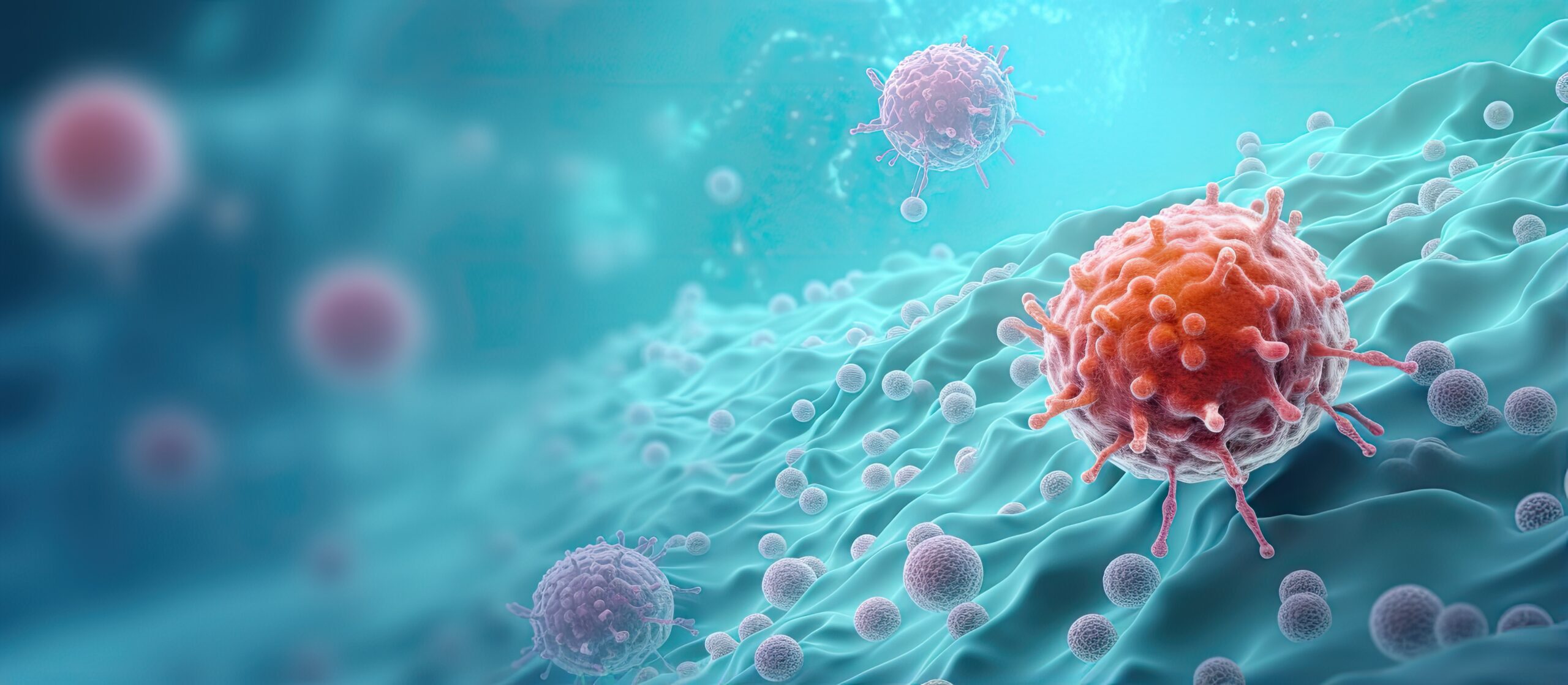Research Roundup NC State Veterinary Medicine, January 2024
Translational research is a hallmark of the innovative research at the NC State College of Veterinary Medicine. From regenerative medicine to drug resistance to clinician care, our researchers are producing leading-edge biomedical results for animal and human health.

Uncovering the Relationship Between Temperature, Time, and Cancer Cell Death During Cryoablation Treatment
Vrabel MR, Fesmire CC, Rich MJ, Kobrin RL, Sano MB, Zaharoff DA.
Cryoablation, a type of cryotherapy, is an FDA-approved focal therapy. Focal therapies are minimally invasive treatments that use energy sources to remove small, slow-growing cancer tumors that have not spread. This method of treatment is used in the management of solid tumors, including prostate, kidney, breast, lung and some liver cancers. Cryoablation is extremely effective at eliminating and controlling small tumors, costs less, is much more minimally invasive than traditional surgery and has a significantly shorter operative time and hospital stay, resulting in faster and better overall recovery with fewer risks of complications. However, while cryoablation is very effective at controlling smaller tumors, patients with larger tumors experience higher recurrence rates following the therapy because it is difficult to ensure that the margins surrounding larger tumors are negative for cancer cells. To better understand and improve the best methods for cancer treatment, researchers, including Dr. Mike Sano from the CVM’s Department of Molecular Biomedical Sciences, aimed to uncover the relationship between temperature, time and cancer cell death during cryoablation. The results from this collaborative study show that the primary factors determining cell viability within the treatment area are the number of freeze/thaw cycles and the intensity of freezing. Essentially, more cycles and higher intensity lead to more cell death. This new data has the potential to influence future preclinical research and improve different therapeutic combinations with cryoablation, hopefully expanding its use as a cancer treatment for several types of tumors.
Find the full study, published in Cryobiology, here.
Investigating Innovative Storage Methods of Intestinal Tissue to Improve Transplantation Success
Elsa Ludwig, Nader Abraham, Cecilia Schaaf, Caroline McKinney, John Freund, Amy S. Stewart, Brittany A. Veerasammy, Mallory Thomas, Diana M. Cardona, Katherine Garman, Andrew S. Barbas, Debra L. Sudan, Liara M. Gonzalez
Intestinal transplantation has been reserved for patients with irreversible intestinal failure who are unable to tolerate other forms of treatment. However, damage to the preserved tissue during the preservation process can cause several critical concerns, including immune activation and higher rates of rejection and tissue loss than observed in other organ transplants. It is essential to investigate and develop alternative ways of preserving and storing organs to improve their viability prior to transplantation, reduce tissue injury and improve transplantation success. A promising method is called normothermic machine perfusion, also known as NMP. This alternative circulates a body temperature, blood-based, oxygenated perfusate through an organ, with the goal of maintaining the normal metabolism of the tissue. This method appears to prevent inflammation and promote regeneration.In clinical studies of liver transplantation, NMP preservation proved to be superior to the traditional method of static cold storage to preserve the tissue grafts. But there has been very limited research focused on preservation of intestines using NMP. That’s why a team of researchers from the Department of Clinical Sciences at the CVM and collaborators at Duke University used a porcine small intestinal model to evaluate and compare cold storage and NMP preservation methods. The study’s results indicate that, compared with static cold storage, NMP may improve graft regenerative potential. Though further studies are needed, this exciting data has the potential to improve the transplantation of healthier bowels and recipient survival.
This study was published in the American Journal of Transplantation and can be found here.

Characterizing Antimicrobial Resistance in E. Coli Isolated from Retail Meat Products in North Carolina
Aworh MK, Thakur S, Gensler C, Harrell E, Harden L, Fedorka-Cray PJ, Jacob M.
Proper surveillance of antimicrobial resistance is a significant One Health concern, especially when it comes to the food supply chain. In the last decade, public concern has grown regarding the use of antimicrobials in food-producing animals and whether the use may affect the potency of similar drugs in human medicine. This is especially important in food-producing animals because of the resistant bacteria’s ability to be transferred to humans through food. One of these types of bacteria is E. coli, a bacteria commonly known to cause outbreaks in the food supply. E. coli is used among researchers as an indicator of antimicrobial resistance in food, animals, environments and human surveillance systems. Researchers from the Department of Population Health and Pathobiology recently conducted a study to characterize antimicrobial resistance in E. coli that was isolated from retail meat purchased from grocery stores in North Carolina. The results indicated E. coli prevalence and the presence of antimicrobial and multidrug resistance was highest in turkey retail meat, indicating to researchers that ground turkey may serve as an important source of multidrug-resistant E. coli.
The full study was published in Plos One, and its results can be found here.
Assessing the Accuracy of Human-Licensed Glucometers in the Veterinary Care of Sharks and Stingrays
Dannemiller NG, Cray C, Westmoreland LS, Christiansen EF.
In human and most veterinary medicine, point-of-care meters provide almost instant results for checking the concentration of blood glucose and β-HB — a chemical that is made by the body to provide energy when not enough carbohydrates or sugars have been eaten. Often, these meters are used by patients with diabetes who need to measure their blood sugar. But laboratory analyzers are the standard for making the same assessments in sharks and stingrays. A recent study conducted by the Department of Clinical Sciences, in collaboration with the University of Miami Miller School of Medicine, tested the accuracy and precision of three commercial point-of-care meters for measuring glucose and β-HB concentrations in stingrays at the North Carolina Aquariums. The data was collected during annual health exams on 28 stingrays from four species: cownose rays, Atlantic stingrays, southern stingrays and yellow stingrays. The CVM researchers found that using point-of-care meters for measuring glucose and β-HB concentrations in stingrays is possible and that a human-licensed glucometer provided the most accuracy compared to traditional laboratory analyzers. This rapid, reliable detection of hyperglycemia could help veterinarians and researchers working with these animals better monitor their welfare during capture, handling, and transport.
The study was published in Frontiers in Veterinary Science, and its results can be found here.

Defining the Relationship between Dental Disease and Cognitive Decline in Aging Pets
Templeton GB, Fefer G, Case BC, Roach J, Azcarate-Peril MA, Gruen ME, Callahan BJ, Olby NJ.
Dental disease and cognitive decline in elderly dogs are two very prevalent issues in veterinary care. In humans, there is even a proven relationship between dental disease and Alzheimer’s Disease. However, there haven’t been extensive studies in veterinary medicine to see if the same relationship exists in canines. To find out, a team of interdepartmental researchers from the CVM launched a translational project that sought to describe the changes in oral microbiota in older dogs over time. By sequencing oral swabs taken from the dogs, the team was able to identify different bacterial and fungal populations in the dogs’ mouths. The most common bacterial species present — Phorphorymonas spp. — is known to produce factors that cause neurodegeneration. Leptotrichia, another bacterial species present, also correlated to cognition scores in these dogs. The results of this interdisciplinary study show the need to continue studying and defining more of the oral microbiota in aged dogs, as well as emphasizing the importance of comparative medicine to further the improvement of the health of animals and humans.
The study was published in Animals and its results can be found here.
Research Connection: Innovative Immunity Approaches to Protect the Welfare of Humans and Turkeys with Dr. Ravi Kulkarni
Dr. Ravi Kulkarni, assistant professor in our Department of Population Health and Pathobiology, sat down with us to discuss how his lab is continuously working to improve gut health and develop alternatives to antibiotics in the poultry industry. Kulkarni was recently awarded a grant from the USDA to develop a probiotic-based oral vaccine for clostridial dermatitis that can be more easily administered to large turkey populations and provide long-term immunity.
The project will take place in three stages and involve multiple interdisciplinary collaborations across NC State’s campus. If the researchers’ probiotic-based vaccine proves successful in preventing clostridial dermatitis, they could apply the technology to create vaccines for other major intestinal diseases in poultry, such as coccidiosis, salmonella and other clostridial infections.
- Categories:


